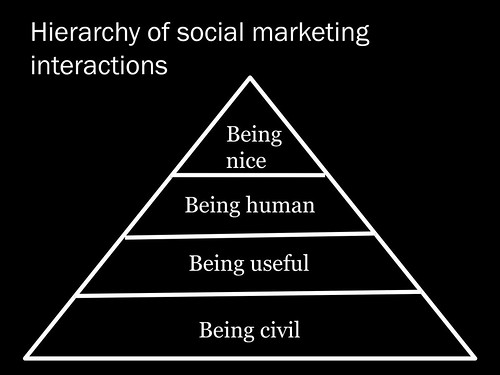Goretex
Gore-Tex Under Siege from Waterproof Fabric Newcomers | OutsideOnline.com – interesting how Goretex waterproof fabric stranglehold mirrors Microsoft’s position in the technology sector. Goretex was historically under threat from a number of systems that had varying degrees of impact. Hipora is a silicon coating structure invented by Korean firm Kolon, Schoeller’s C change which has temperature dependent venting, SympaTex commonly used when you see ‘no brand’ 3-layer laminate, usually lower price products that would lose margin paying for Goretex licensing. Lowe Alpine’s ceramic coated triple point fabric, but managed Goretex to survive and Lowe Alpine didn’t. There are other competitor products including I suspect that the other fabrics will become niche pieces unless they sort their marketing out. Goretex is primarily a branding exercise, that sets minimum standards such as taped seals. Much of Goretex intellectual property has been voided or circumvented.
Marketing is where the Goretex difference lies now, but it is known for a confrontational relationship with partners.
China
Hong Kong, Shanghai and Beijing among world’s top cities for super rich: Shanghaiist
What Make Chinese Go Shopping Online? | China Internet Watch
As China awakes, the world order shakes | Irish Examiner
The Revenge of Wen Jiabao – By John Garnaut | Foreign Policy
Consumer behaviour
Brand names matter in China | Warc.com
The Biggest Relevance Challenge Ever? Why Millennials Aren’t Buying Cars | Aaker on Brands | Prophet – remember seeing this about Japanese youth first
Teens, Smartphones & Texting | Pew Research Center’s Internet & American Life Project
The Way We Read Now – NYTimes.com
Do E-Books Make It Harder to Remember What You Just Read? | TIME.com – ebooks are bad for content that you are trying to retain in your memory
Design
Why I am letting my Google IO invitation expire – Jeffrey Zeldman Presents The Daily Report – great example of the user experience and online marketing FAIL
Finance
8 Securities, Asia’s First Socially Networked Trading Portal Launches in Hong Kong | TechNode
An Apple you can Bank on? – mobile banking
Google reportedly pushing devs to use Google Wallet | CNET News – interesting move, I can see why they are doing it but it could raise antitrust questions
FMCG
P&G sees licensing success: Warc.com
Germany
Munich saves a fortune switching to Linux – Saves a third on IT spending | TechEye
Hong Kong
Kwok brothers arrested by HK watchdog – FT.com – Sun Hung Kai is Hong Kong’s largest property company. Surprising that they are involved as the big firms there generally keep their noses clean (paywall)
How to
How to Prevent your Blogger Blog from Redirecting to Country Domains
Supercharge PDFs on Tablets via Uberflip’s HTML5 $29.95 Answer | Uberflip – PDF to HTML5 publishing
Ideas
Science fiction and fantasy when the awesome has become ordinary | The Verge
U.S. Simulation Forecasts Perils of an Israeli Strike at Iran – NYTimes.com
The “Mad Men” Reading List | The New York Public Library – a good list for reading material inspiration
Bloomberg Says Social Media Can Hurt Governing – NYTimes.com – short-termism promoted by concern about what the social web says
Insight: Samsung: fast executioner seeks killer design | Reuters
Innovation
Thermal cloak’ to dissipate heat in electronics
Akustica develops two-chip analog MEMS microphone
AT&T Reinvents the Steering Wheel – Technology Review – interesting use of haptics in the steering wheel
Panel ponders many-core ICs tripping ‘the singularity’
Ireland
Ireland hits record trade surplus | Irish Examiner
Japan
Numbers of young scientists declining in Japan : Nature
Korea
Mobile phone makers, carriers fined for price rigging – Korea Times – not terribly surprised
Luxury
After Targeting Luxury Cars, Chinese Government Mulls High-End Booze Ban « Jing Daily
China to cut import duties on goods
Luxury automakers face China challenge: Warc.com
ChinaFile: Do’s and Don’ts for Launching Your Fashion Label in China – WWD.com
Marketing
Two Bing Marketers Fired for Violating Procurement Policy | Advertising Age
IKEA China: Build a Loyal Following Through Customer Engagement Online | The China Observer
Media
The Guardian’s Google Revenue Fantasy – And the Future of Newsrooms | SiliconANGLE
Anti-piracy group sues professor for defamation – Promusicae in reputational train wreck by going legal
Hotfile researcher discredits MPAA-funded piracy study
Google and Twitter may struggle to resist UK censors — GigaOM – the challenge is that this is the thin end of a wedge. The Olympics
‘Pottermore’ Breaks All Retailers and Rules (Except Apple’s and Region Restrictions) | Wired.com
Only Content Industries Can Create Content People Want, Says MPAA’s Attaway | paidContent – this reminds me of where Microsoft was with the open source movement circa 2001
Why Facebook is Really Hiring Advertising Agency Creatives – Advertising Age
Defining Property – Paul Graham on the content industries
Nearly 3 out of 4 Ad Campaigns Deliver Ads Adjacent to Brand Inappropriate Content – opportunity for owned media?
Pew: Twitter, Facebook Aren’t Moving As Much News As You Think | mocoNews
Apple Antitrust Suit Would Aid Amazon Book Monopoly – Bloomberg
HTC rumored to have bought MOG — Tech News and Analysis
Meme
The Hottest App On The Planet, Draw Something, Has Suddenly Stopped Growing – Draw Something like Angry Birds is the classic example of app as meme. It has a brief but glorious shelf life that will spawn less successful imitators
Online
Breaking, Pony Ma Confirms that Tencent’s Weixin Has Reached 100 Million Users | TechNode
Google Hasn’t Explained Why Users Would Want a Unified Online Identity – AllThingsD
Daily Dot | A Pinterest spammer tells all
New search tool to unlock Wikipedia – New Scientist – interesting new development in search (paywall)
Exclusive: Kevin Rose Will Join Google – AllThingsD – interesting move to stock up on social talent and geek kudos by Google
Yahoo-Facebook patent fight: more than meets the eye | Tech News and Analysis – great summary on why Facebook Connect is pure poison
FTC Subpoenas Apple in Google Antitrust Probe – AllThingsD
I Hope Yahoo Crushes Facebook in its Patent Suit « blog maverick
Meet The 10 Patents Yahoo Is Using To Sue Facebook | paidContent
The Potential Problems of Consumer Cloud Storage in China | Tech in Asia
Yahoo reportedly has a license to patents Facebook just bought from IBM | The Verge
百度搜索风云榜 – Baidu’s equivalent of the old Yahoo! Buzz and Google’s Zeitgeist tool
Retailing
U.S. Stores Learn the Ropes of Shipping to Foreign Shoppers – NYTimes.com
Security
Anatomy of an Attack – The RSA Blog and Podcast – RSA’s own tale
New Trojans Use Old Tricks to Infiltrate Macs
MasterCard, VISA Warn of Processor Breach — Krebs on Security
Firefox To Use Google Secure Search By Default; Expect More “Not Provided” Keywords To Follow
Meet The Hackers Who Sell Spies The Tools To Crack Your PC (And Get Paid Six-Figure Fees) – Forbes
Software
Chinese Android Apps Are Bypassing Google’s Play Store | mocoNews
iOS wins over more new smartphone buyers as Android holds steady
Microsoft files restraining order, offers $300M bond in Motorola patent case
Blackberry: focus more on mobile shopping and less on trying to be cool
Fragmentation bomb wounds Android in developer war • The Register
Android reunited with mainline Linux – Rethink Wireless
Nokia’s Redesign of the Windows Phone UI – shame that Nokia are not looking to alter anything. It’s a shame that all Nokia’s HCI smarts is going to waste
Angry Birds Space Game Skips Windows Phone in Blow to Nokia – Bloomberg
Spain
Spain Shows Highest Growth in Smartphone News Audience Across EU5
Taiwan
Apple supplier Foxconn cuts working hours, workers ask why | Reuters
Technology
I, Cringely » Lessons from Redmond – Amazon going ‘Microsoft’ on businesses built using AWS
Teardown slideshow: Inside the third-generation iPad – great analysis by EETimes
Telecoms
ExtremeTech » $1.5 billion: The cost of cutting London-Toyko latency by 60ms
Look! It’s yet another effort to save DSL — Broadband News and Analysis
Web of no web
Communities Dominate Brands: Elop, Nokia, Tablets, Location Based Services and Product Line
Wireless
Apple Invents a Killer 3D Imaging Camera for iOS Devices – Patently Apple
China Mobile says aims to add 30 million 3G users this year | Reuters
Motorola, HTC, Samsung among those facing new antitrust suit | InfoWorld
Report: Nokia paying AT&T for exclusive employee use of the Lumia 900 | wpcentral – interesting that AT&T is doubling down behind Nokia on this. Would be interesting to see how profitability of handset and usage net out
Nice Try: Motorola Wanted to License Every One of Apple’s Patents – AllThingsD
Data now 85% of mobile traffic, but 39% of revenue – what gives? — GigaOM
Communities Dominate Brands: The CEO Insane – How To Rescue Nokia



